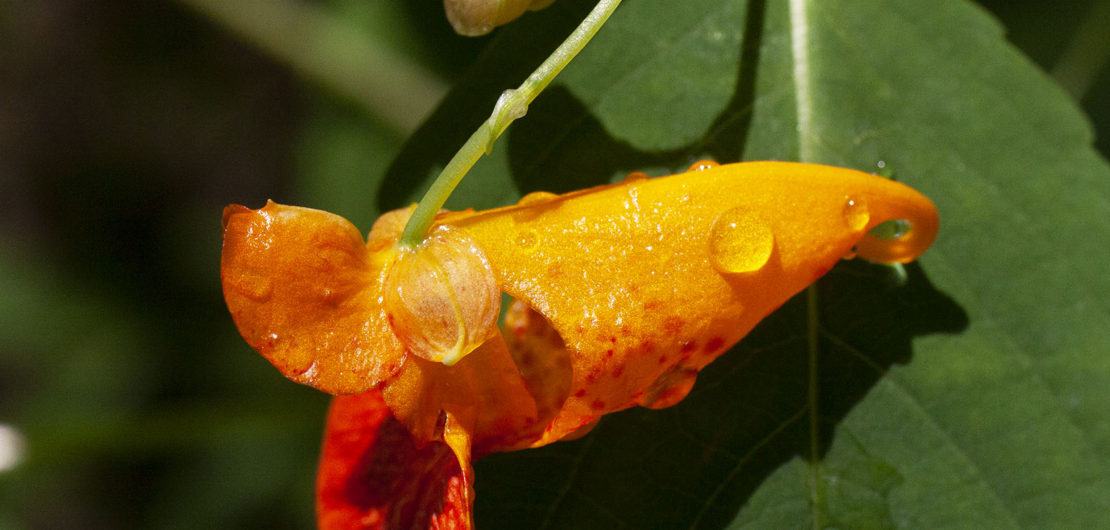
Jewelweed Project
(Photos and content contributed by Josiah Patrick)
Jewelweed (Impatiens capensis) is a beautiful native plant that quickly dominated some areas after English Ivy removal in the Clyde Shepherd Sheep Project. We teamed up with Sunlit Earth! sponsored nature photographer Josiah Patrick to learn more about this cool plant!

Project Jewelweed post 1:
To learn more about the beautiful jewelweed we must start from the beginning. Jewel weed is a part of a group of plants called annuals. Annuals only live about a year and are reborn the next year through seeds. The seeds start off very small like depicted in the picture below in seedpods and grow in size until they pop when touched. This sensitivity to touch is where jewel weed get their colloquial name “touch me nots”. This process occurs all year long and because of this these flowers are an Important part of the ecosystem and are popular with many pollinators. Stay tuned next week to see the next step in the development of this important plant
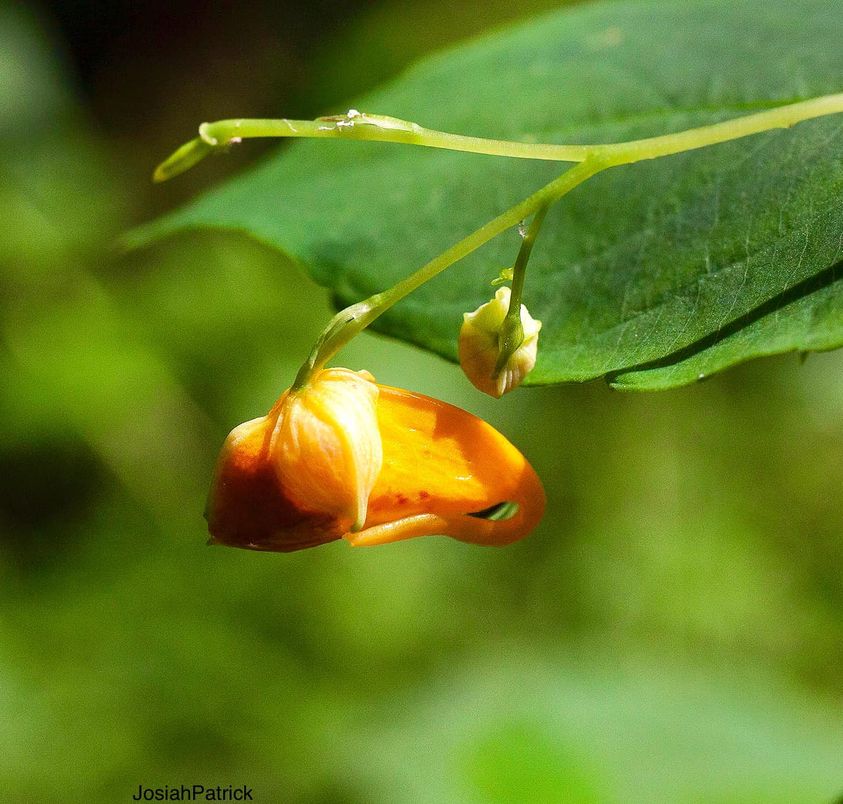
Project Jewelweed post 2:
As the pod explodes it forms a long corolla measuring approximately 2.5 cm. in length. This corolla opens into a three-lobed bloom made up of five fused petals. In the picture above shown it shows the transition from the pod form to the Corolla. Stay tuned next week to see the next step in the development of this important plant and visit post one to catch up on the development of this important plant

Project Jewelweed post 3:
Once the corolla opens into a three-lobed bloom made up of five fused petals. It becomes an important food source for creatures both large and small. One of the major benefiters of this local plant is the ruby throated hummingbird. The hummingbird feeds on the nutrient rich nectar. The plant benefits as well as the hummingbird works as one of its main pollinators.
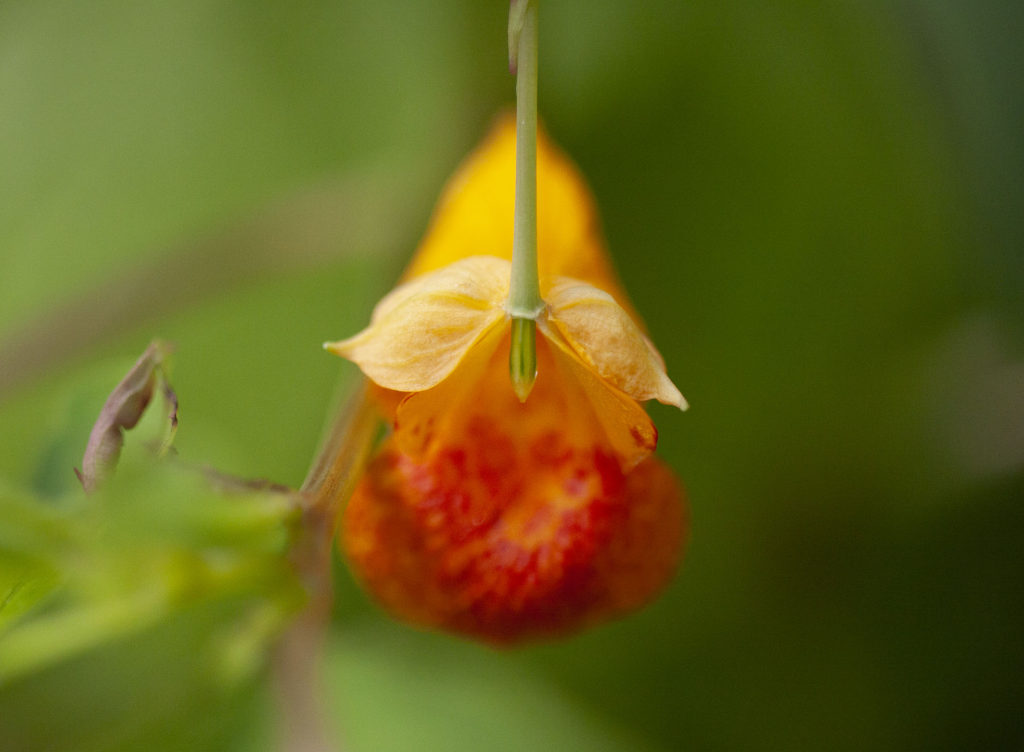
Project Jewelweed post 4:
While these are the common flowers the jewel weed is known for. Jewelweed also has inconspicuous flowers that never open. These flowers known as cleistogamous fertilize themselves and produce seed without ever exchanging pollen with another flower. Cleistogamous flowers are very small and grow near the bases of the leaves. Research has shown that seeds produced by the showy, cross-pollinated flowers grow into larger, hardier plants, but the cleistogamous flowers produce seed at a much lower cost to the parent plant. Check in next week to find more about the stem system as well as more about the creatures that benefit from jewel week ![]()
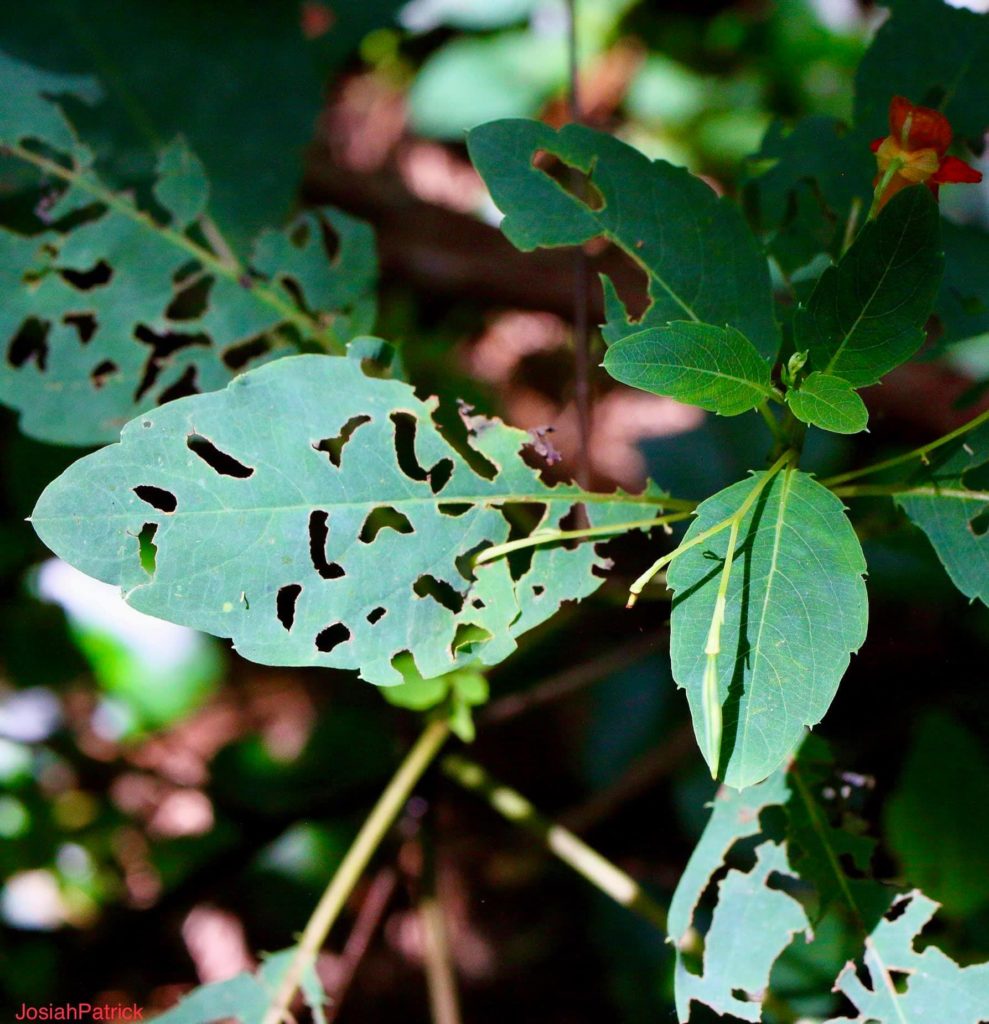
Project Jewelweed post 4.5:
This will be the shortest project jewelweed post ever so we’ll call it 4.5. The coolest thing about jewelweed and other native plants is highlighted in this picture. Unlike invasive species such as Chinese privet, english ivy and kudzu which typically grow unhindered, Jewelweed is controlled by the local creatures who help to keep their growth in check. This allows for other species of plants to thrive alongside it which leads to more diversity and ultimately a stronger ecosystem. Native plants should be grown and supported and can be just as beautiful as non native plants while maintaining balance within your small ecosystem. Stay tuned next week to find out exactly what eats jewelweed as well as some plant species that grows alongside it. Check out post 1-4 to catch up on our jewelweed adventure
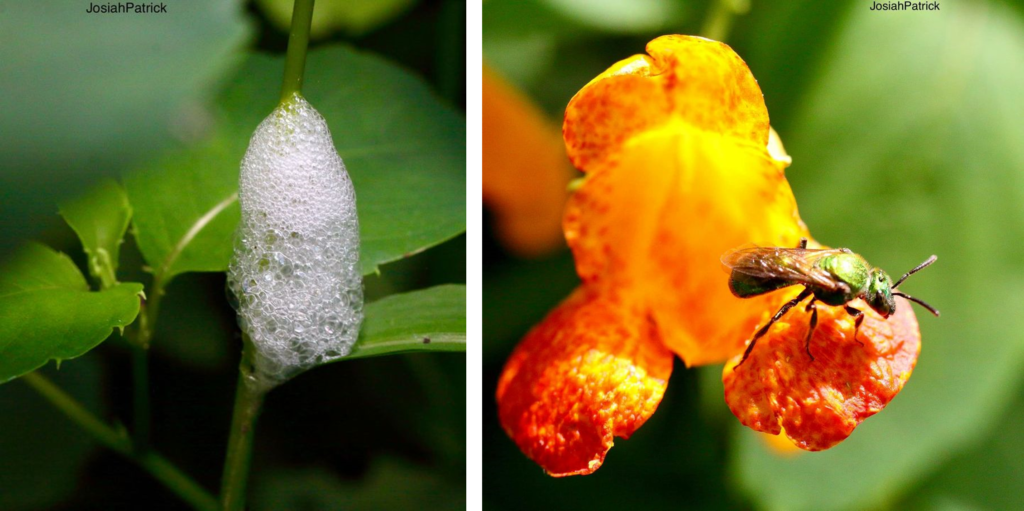
#ProjectJewelweed Post 5.
During this post we will focus on two of the creatures that depend on jewelweed. The first is the frog hopper (family Cercopidae), also known as spittlebugs. In the first image is the capsule the spittle bug is known for. The whitish nymph secretes a fluid through the anus that is mixed with a secretion from the abdominal glands. It is used to protect the nymphs from predation as well as provides insulation from temperature extremes and provides a low humidity environment so the tender nymph doesn’t doesn’t desiccate. The virescent green metallic bee (Agapostemon virescens) in the second image is a pollen eater and relies on the pollen from jewelweed for food. They also use it for their young.Females sometimes nest together but in their own separate areas of the burrow. Each female digs her own brood cells and collects pollen and nectar to fashion the pollen ball upon which she will lay an egg. Without a resource like jewelweed, the bees would be left with one less nesting resource. Check out post 1-4 to catch up on our jewelweed adventure
Resources used.
https://wimastergardener.org/article/spittlebugs/https://explorer.natureserve.org/…/ELEMENT_GLOBAL.2…/. http://blogs.oregonstate.edu/…/pollinator-week…/

About the author: Josiah Patrick
Josiah is from Trinidad and Tobago, where he cultivated his love for nature and animals. He is currently a master student studying school counseling and mental health. Josiah is also a Sunlit Earth! sponsored wildlife photographer who spends most of his free time chasing birds where they may be. In his downtime, he enjoys taking friends out on the trails and helping them learn more about the wildlife around them. Josiah first became involved with ACE when he initiated the Jewelweed project, an educational series of posts focusing on a native plant benefiting from the Clyde Shepherd Sheep Project. Josiah wants the world to become a more equal and kinder place. He hopes his photography can help people appreciate the connections between ourselves and the natural world, leaving us inspired to be better stewards. He believes that by learning to love and care for nature, we can learn how to do the same for each other. You can see more of Josiahs work at https://www.instagram.com/mvp_status/